Timeline
1920
New Cliffs bandstand was erected.
Floral Hall was built on the old Happy Valley site near the cliffs bandstand.
Kursaal
Kinema
reopens.
Post
war
and
the
Kursaal
is
back
in
business
after
being
occupied
by
troops.
The
cinema
opened
on
26th
January
with
the
film
'In
Friendships
Name'
starring
Ruth
Clifford.
The
cinema was to only survive another 20 years closing in 1940.
Rivoli
opens.
Alexandra
Street's
latest
venture
open
its
doors
on
31st
May
1920.
The
first
movies
to
be
shown
were
the
Swedish
silent
movie
‘Flame
of
Life’
and
‘A
Little
Child
Shall
Lead
Them’.
On
26th
July
1920
the
cinema
was
hit
by
a
fire
when
the
red
curtain
to
the
side
of
the
stage
burst
into
flames.
The
staff
of
the
cinema
managed
to
extinguish
the
flames,
amazingly
the
packed
audience
stayed
to
watch
the
action
unfold
and
the
orchestra
drenched
by
the
actions
of
the
fire
fighting
played
on.
The
building
has
moved
between
being
a
theatre
to
a
cinema
and
back
again
over
the
years,
more
recently
the
New
Empire Theatre. This has now closed and the building demolished.
Coleman
Estate
starts.
Just
south
of
the
A127
a
large
sweep
of
houses
started
to
be
erected
in
this
year,
expanding not only the borough boundaries but also its population.
Belsfield
acquired
for
school.
Southend's
Education
Committee
decided
an
intermediate
school
was
needed
for
boys
and
girls.
Belsfield
at
110
Victoria
Avenue,
a
two
acre
site
was
purchased
at
a
cost
of
£7,000.
The
school
was
called
the
Commercial
Secondary
School
and
opened
on
27th
April
1920.
Buildings
not
far
away
behind
the
Chelmsford
Avenue
Congregational
church
were
also
brought
into
use.
By
1922
372
children
were
on
the
school's
roll.
By
August
1921
the
school's
name
was
becoming
a
little
confusing,
so was renamed Westclif High School.
Frank
Matcham
dies.
Matcham
(1854-1920)
has
been
called
‘the
most
prolific
theatre
architect
of
all
time.
His
lavish
work
can
be
found
throughout
the
country,
his
masterpiece
being
the
London
Coliseum
(1904).
However,
he
also
designed
pubs,
cinemas
and
hotels,
and
the
glittering
County
Arcade,
Leeds.
It
seems
remarkable,
therefore,
with
such
a
successful
practice
Matcham
never
actually
qualified
as
an
architect.
Matcham
retired
to
Westcliff-on-Sea
with
his
wife
shortly
before World War I. He died at home, 28 Westcliff Parade, on 17th May 1920.
Priory
Park
opens.
Thanks
to
the
bequeathment
of
the
land
around
the
Prittlewell
Priory
by
R.
A.
Jones,
Priory
Park
was
born.
The
Refectory
and
Priory
buildings
were
restored
by
the
Corporation
at
a
cost
of
£7.500,
and
the
Park
was
officially
opened
by
HRH
the
Duke
of
York,
(later King George VI), on 14th July, 1920.
Westcliff High School for Boys and Girls was founded.
Westcliff-on-Sea
Motor
Charabanc
Company
run
the
first
bus
service
between
the
High
Street
and Hamlet Court Road.
Pier
Hill
Cinema
closes.
Not
the
most
alluring
of
the
town's
cinemas.
Closing
in
1920
after
eleven
years
in
business.
It
was
known
as
the
Grove
Picture
Theatre.
It
enjoyed
a
short
time
as
a
Bioscope
before
closure.
It
became
a
billiard
hall
then
was
taken
over
by
a
bus
company. Today it does not exist, the footprint having been absorbed into the Royal's Shopping Centre.
War
Memorial.
Designed
by
Sir
Edwin
Lutyens,
architect.
An
obelisk
of
Portland
stone
standing
on
a
high
plinth
decorated
with
a
laurel
wreath
and
inscribed
was
erected
on
Clifftown
Parade
in
1920.
This
memorial
is
used
regularly
to
remember
those
who
gave
their lives in conflicts.
Rotary arrives. Southend Rotary Club was founded in 1920 with a healthy membership of 73.
N&M
opens.
To
provide
a
respite
environment
for
veterans
of
the
First
World
War,
the
Naval
&
Military
Club
in
Royal
Terrace
opened in 1920. A fine facility with superb views over the Estuary.
1921
Leigh bathing station was opened by the Mayor of Southend.
Southend Council announce plans for the new Arterial Road (A127).
First trams enter Warrior Square as the tracks expand.
The last fleet of trams, fully roofed, purchased by the Corporation.
Population of Leigh reached 15,031.
Victory
Sports
Ground
opens.
To
honour
the
sportsmen
of
the
Borough
who
gave
their
lives
during
the
Great
War,
the
Victory
Sports
Ground
in
Sutton
Road
was
formally
opened.
A
set
of
ornate
gates
to
the
ground
were
also
installed.
Presented
by
honorary
Freeman
R. A. Jones.
Agricultural
training.
Post
war
the
government
provided
schemes
to
help
veterans
of
the
last
campaign
develop
new
skills
and
provide
for
their
families.
The
aerodrome
was
particularly
pulled
into
service
with
land
taken
to
provide
agricultural
training,
with
pig
pens
and
chicken
coops.
A
significant
number
of
trainees
some
being
amputees were housed in red bricked cottages close to the St Laurence Church.
King
Visits
Southend.
King
George
V
raced
“Britannia”
in
the
first
Southend
Yachting
Week,
held
in
1921.
This
fact
resulted
in
a
large
number
of
entries
and
the
King
won
the
race.
His
visit
to
the
town
was
welcomed
by
thousands of people who lined Victoria Circus and the High Street to get a glimpse of their King.
Fun at the park. The Kursaal Amusement park reopens.
Pier disaster. Concrete Ship Violette collides with pier.
Leigh
offices
opened.
A
stirring
occurred
on
29th
May
1921
in
Elm
Road
when
the
Leigh
Urban
District Offices were formally opened.
New Flagstaff. August 1921 saw the erection of a new Flagstaff on Clifftown Parade.
Memorial. Shoebury War Memorial unveiled in front of the Palace Cinema in Ness Road.
Co-op
bakery
arrives.
Co-operative
societies
were
alive
and
well
in
Southend.
Sutton
Road
saw
the
opening of the bakery and biscuit factory in 1921.
The High Street suffers with flood damage on 1st Nov 1921.
27th
November.
Unveiling
of
the
Southend
War
Memorial
by
Lord
Lambourne,
the
Lieutenant
of
Essex,
in
the
presence
of
the
D
Company,
6th
Essex
Regiment.
The
War
Memorial,
which
was
designed
by
Sir
Edwin
Lutyens
R.
A.
consists
of
an
obelisk
of
Portland
stone,
mounted
on
a
podium,
and
flanked
on
one
side
by
the
Union
Jack
and
on
the
other
by
the
White
Ensign,
which
are
carved
in
stone.
A
wreath
was
carved
on
the
front
and
on
the
back
of
the
obelisk.
The
podium
rests
on
a
large
square
base
connected
with
wing
and
return
walls,
two
feet
thick,
enclosing
a
court
which
is
approached
by
six
steps.
The
memorial
stands
39
feet
high.
The
names
of
1,338
men
connected
with
Southend
who
gave
their
lives
in
the
Great
War,
1914-18,
are
engraved
on
a
tablet
placed
in
the
refectory
at Prittlewell Priory.
1922
St. Paul’s ecclesiastical parish was formed from the parishes of St. Mary the Virgin, Prittlewell.
Industrial
Exhibition.
In
March
the
Kursaal
hosted
the
Rotary
Industrial
Exhibition.
This
event
was
a
showcase
for
artisans
and
industry
in
general
boosting
the
town's
expectations
towards
better
times
ahead,
post
war.
Visitors
could
see
a
potter
at
work,
fabrics
being
painted,
a
full
dairy
in
operation,
hosiery
making
as
well
as
artificial
flower
making.
The
exhibition
ran
from
Saturday
18th
until
Saturday
25th
March
each
day
afforded
a
special
guest
to
open
the
day's
activities
the
first
day
saw
the
Lord
Mayor
of
London
Sir
John
Baddeley
doing
the
honours;
the
last
day
of
the
event
Sir
George
McLaren
Brown
KBE., opened the exhibition.
New
Congregation
for
Westcliff.
St
Paul's
church
was
consecrated
23rd
September
1922
by
the
Bishop
of
Chelmsford.
Allowing
a
new
flock
to
worship
at
a
small
but
finely
built
church
in
Summercourt
Avenue.
The
site
also
housed
a
natural
spring
pump
which
allowed
parishioner's
an
opportunity
to
drink
what
was
considered
to
be
very
healthy
water,
no
doubt
to
cleanse
the
soul.
The
church
was
originally
built
with a small spire positioned centrally on top of the tower, this has subsequently been removed.
Circus
in
town.
Lord
John
Sanger's
Circus
arrived
in
Chalkwell
Park
in
September
1922.
Some
of
the
acts
included
the
Sanger's
famous
Mammoth
Comedians
who
were
performing
a
mirth
making
act
called:
'Elephant
Barbers,'
also
on
the
menu
were
Human
Sea
Lions,
Hindoo
Snake
Charmers,
Lone
Face
and
his
North
American
Indians
(apparently
the
only
savage
troupe
in
Europe),
not
forgetting the most famous circus clown of the time Pimpo.
Roadworks.
Southend
in
1922
was
going
through
a
travel
plan
operation
of
road
building
and
widening,
to
cope
with
the
expanding
population
and
throngs
of
visitors
coming
to
the
town.
Key
projects
included
the
finishing
of
Prittlewell
Chase/Boulevard.
The
road
from
Cuckoo
Corner
to
Sutton
Road.
As
well
as
the
widening
projects
including
outside
the
Hamlet
Court
Schools
on
the
London
Road where the school railings were pulled right back. West Street too underwent widening by the Vicarage (now petrol station).
New Manager for the Blues. Ted Birnie took control of team affairs in 1922 and lasted at the club until 1934.
Southend
in
the
news.
The
"Southend
Telegraph"
newspaper
published
its
first
issue
on
March
31st,
1900.
It
was
renamed
the
"Southend
Pictorial
Telegraph"
in
1922,
and
later
that
same
year,
was
renamed
the
"Southend
&
County
Pictorial."
It
provided
a
revolution
within
local
paper
circles
by
providing
for
the
first
time
concentrated
efforts
in
each
edition
of
images
of
around
the
area
and
beyond
but
also
local
dignitaries,
weddings
and
funerals
of
the
day
as
well
as
sporting
teams
from
all
over
the
area.
Southend
was going through a period of change and this was reflected within the images in the Pictorial.
Castle
Hotel
to
be
built.
The
new
Castle
Hotel
is
planned
in
1922,
to
be
built
on
the
corner
of
Camper
Road
and
Eastern
Esplanade.
The
original
Castle
Hotel
which
was
further
west,
south
of
Eastern
Esplanade
towards
the
Minerva
Hotel
was
not
finally
demolished
until 1925.
Panto.
The
Hippodrome
in
Southchurch
Road
was
the
stage
for
the
annual
town's
pantomime,
this
year
1922
the
treat
would
be
Dick
Whittington.
Victoria
Carmen
took
the
lead
role
as
"Dick".
Audiences
were
enticed
to
the
show
with
Dick
Whittington's
amazing
Diamond Ship, composed of a myriad of crystals.
1923
The parish of St. Michael and All Angels is formed out of the parish of St. Saviour.
Eagle's
new
look.
The
Spread
Eagle
was
part
of
the
original
hamlet
of
Prittlewell
in
Victoria
Avenue.
1923 saw a reconstruction making the building more recognisable to today.
King
George
V
visited
Southend
(Yachting
Week)
again
in
1923
and
was
just
as
memorable
as
his
1921
visit,
but
for
all
the
wrong
reasons,
“Britannia”
ran
aground
just
inside
the
West
Shoebury
Buoy
and
right
in
front
of
the
“London
Belle”
who
was
carrying
a
large
number
of
spectators
many
of
them
local
yachtsmen
who
were
not
racing
that
day
and
were
no
doubt
saying
to
themselves
“for
goodness
sake
tack!”
contrary
to
what
some
feared
this
event
was
not
the
end
of
Southend
Yachting
Week
which thrived for many more years to come.
Saxon
Finds.
During
the
building
of
Cuckoo
Corner,
the
junction
joining
principally
Prince's
Avenue
with
Victoria
Avenue,
excavations
were
carried
out
uncovering
a
number
of
Saxon
relics,
something
future years would prove fruitful for around this area.
The Overcliff Hotel opened.
Fire
at
Deluxe.
Centrally
located
just
off
Victoria
Circus,
this
cinema
caught
fire
mid
performance
spilling
its
audience
on
to
the
street
on
7th
August
1923.
Much
of
the
building
was
not
insured
the
loss
borne
by
the
owner.
The
cinema
never
reopened,
it
did
however,
provide
a
venue
for
indoor
golf,
and
prior
to
demolition
in
1936,
a
fund
collection
centre
for
Southend
Hospital.
Dixons
extended
there
store
into
the
rebuild,
much
later
to become W. H. Smiths.
A
cricketer
born.
Trevor
Edward
Bailey
(born
3
December
1923
in
Westcliff-on-Sea)
became
an
English
Test
Cricketer.
He
was
educated
at
Alleyn
Court
School
in
Westcliff-on-Sea
before
going
to
Dulwich
College
and
Cambridge
University.
He
is
the
only
player
since
the
Second
World
War
to
score
more
than
2,000
runs
in
a
season
and
take
100
wickets,
a
feat
he
achieved
in
1959,
and
he
achieved
the
all-rounders'
double
of
1000
runs
and
100
wickets
in
a
season
eight
times,
a
post-WWII
record
he
shares
with
Fred
Titmus.
He
was
selected
as
one of the five Wisden Cricketers of the Year in 1950.
1924
Southend Britannia pleasure boat is built.
Marine Parade was widened.
Bronze
Age
man
found.
Excitement
hit
the
brickfields
of
Thorpe
Hall
as
a
skull
of
a
Bronze
Age
man
was
found
on
20th
February
1924.
Pleasure steamer Medway Queen makes her maiden voyage.
St
Mary's
Church
Tower
restored.
The
most
prominent
church
in
Southend,
or
more
appropriately
Prittlewell,
for
its
age
has
under
gone
a
number
of
benchmark
repairs
and
restorations.
After
all
there
is
evidence
the
building
goes
right
back
to
when
Christianity
was
first
introduced
to
the
England. 1924 saw the start of work on the tower which completed in 1925.
A
large
fire
destroyed
a
number
of
properties
in
Tyler's
Avenue,
Southend
on
4th
July
1924.
Starting
at
Hamcock's
Furniture
Depository
and
spreading
along
to
engulf
Southend
Fire
Station
which
too
was completely destroyed.
Law
Court
opens.
Southend's
growing
size
demanded
a
more
suitable
localised
legal
system;
1924
saw
the
opening
of
the
new
Southend
Police
Court
which
is
built
in
place
of
the
old
one
in
Alexandra
Street
at
a
cost
of
£6,000.
The
Building was opened by Mayor W. Miles.
Westcliff
High
School
for
Boys
established.
Since
1920
Westcliff
High
School
was
accommodated
for
boys
and
girls
in
the
Belsfield
site
on
Victoria
Avenue.
However,
plans
were
a
foot
by
the
Town
Planners
to
turn
the
Victoria
Avenue
area
into
civic
buildings
so
there
was
always
going
to
be
a
need
for
the
school
to
find
a
new
home.
The
foundation
stone
for
the
new
Westcliff
High
School
for
Boys
on
Eastwood
Lane
was
put
down
in
1924,
the
school
then
followed
at
a
cost
of
£58,510
and
opened
for
boys
in
the
summer
term
of
1926.
The
girls
were
left
behind
at
Belsfield
for
a
further
five years, but eventually did move over to buildings adjacent to the boys.
Corporation
Pier
built.
A
tiny
pier
in
comparison
to
its
much
longer
brother
appeared
this
year.
Opposite
the
gasworks
and
alongside
a
gas
jetty
off
Eastern
Esplanade.
In
later
years
it
became
a
hot
battle
for
development
as
a
platform
for
a
high
quality
restaurant.
It
was
finally
cleared
from
the seafront in 2007.
1925
Southend’s first trolley bus service started with route from Victoria Circus to the Blue Boar.
Nobles Chemist was established, it expanded to incorporate a newsagents and later developed into a large electrical store.
25th
March.
A
new
arterial
road
to
London,
constructed
by
the
Ministry
of
Transport
at
a
cost
of
over
£1,000,000,
was
formally
opened
by
HRH
Prince
Henry
K.G.,
P.C.,
G.C.V.O.,
the
road,
which
is
30
miles
long
and
100
feet
wide,
took
about
three
years
to
complete.
c1925. Children’s playground opens in the Sunken Garden.
Southchurch
Hall
and
grounds
are
given
to
the
town
by
the
family
of
the
late
Alderman
Dowsett,
the
first
mayor
of
the
borough.
The
Hall is a medieval house, surrounded on three sides by a moat and earthworks, parts of the building date back to the 14th century.
A
Footballer
born.
Welcome
Frank
Dudley
on
9th
May,
a
prolific
centre
forward
who
wore
Southend
United's
shirt
before
moving
on
to the heady clubs of Leeds United and Southampton. After retiring Frank became Southend's Youth Coach.
The
Castle
goes.
A
common
pub
on
Marine
Parade
was
removed
permanently
from
the
seafront
in
1925.
Workmen
demolished
the
Castle Club.
Leigh
Horticultural
Society
formed.
From
a
meeting
of
gardeners
on
Thursday
4th
June
1925,
came
the
forming
of
the
Leigh
Horticultural
Society,
at
Elm
Hall
in
Elm
Road.
Over
the
years
the
society
became
well
known
for
it's
flower
shows
in
Chalkwell
Park
and
the
affiliation
of
the
Manchester
Drive
Allotment
Society.
They
celebrated
their
75th
anniversary
in
2000
at
the
Chalkwell
Park
Rooms.
Southend's
Father
dies.
Robert
Arthur
Jones
dies
on
23rd
May
1925,
and
was
buried
with
the
full
respect
of
the
whole
town.
Scenes
of
mourning
were
unprecedented
for
this
statesman
who
was
instrumental
to
the
creation
of
this
town.
He
was
buried
in
the
grounds
of
Priory
Park,
the
place
he
donated
to
the
town
for
the
benefit
of
the
town's
people
forever.
A
jeweller
by
trade
who's
premises
stood
out
on
the
High
Street
and
even
today
can
be
recognised
with
the
clock
protruding
from
the
façade.
St
Luke's
Church.
The
foundation
stone
was
laid
for
the
temporary
St
Luke's
Church
building
(now
used
as
one
of
the
Church
Halls)
in
November
1925.
The
church
is
located
on
St
Luke's
Road
off
Bournemouth
Park
Road.
Records
show
the
first
Parochial
meeting
was
held
on
26th
January
1927.
At
this
time
St
Luke's
was
part
of
the
Parish
of
St
Mary's
Prittlewell.
The
District
of
St
Luke
was
separated
from
St
Mary's
and
the
Reverend
C.
N.
Wardle-Harpur
appointed
as
the
first
Vicar
at
St
Luke's
on
20th
November
1931.
In
1958
the
Church
Council
approved
plans
for
the
new
Church
building,
and
in
September
1959
the
foundation
stone
for
the
new
Church
was
laid.
On
Saturday
15th
October
1960
the
new
church
was
Consecrated,
and
the
First
Communion
took
place
on
Sunday
16th
October
1960
at
8am.
December.
Mr
Reginald
Blackall,
a
distinguished
scientist
who
lived
at
Marine
Avenue,
Leigh,
was
regarded
as
an
X-ray
martyr
when
he
died
aged
44.
He
was
a
pioneer
and
while
radiographer
to
London
Hospital,
carried
out
much
valuable
research
into
the
rays
but
in so doing lost his hands.
1926
Hamlet Court Road, Westcliff, bridge was widened and rebuilt.
February.
Viscount
Elveden,
the
Conservative
M.P.
for
the
Borough,
announced
his
gift
of
the
site
at
Prittlewell
for
a
new
hospital,
plus a gift of £20,000.
Southchurch Library opens in the ancient Southchurch Hall.
Talza
Arcade
(Victoria
Arcade)
opens.
This
was
an
important
site
within
Southend's
retail
history.
One
of
the
first
arcades
of
it's
kind
providing
shops
and
shoppers
a
covered
retail
experience.
The
concept
is
not
lost
today, the same site as the newly revamped Victoria's Shopping Centre/Plaza provides the modern day version.
An
Author
born.
John
Robert
Fowles
was
born
March
31,
1926
in
Leigh-on-Sea.
He
recalls
the
English
suburban
culture
of
the
1930s
as
oppressively
conformist
and
his
family
life
as
intensely
conventional.
Of
his
childhood,
Fowles
says
"I
have
tried
to
escape
ever
since."
The
most
commercially
successful
of
Fowles'
novels,
The
French
Lieutenant's
Woman,
appeared
in
1969.
It
resembles
a
Victorian
novel
in
structure
and
detail,
while
pushing
the
traditional
boundaries
of
narrative
in
a
very
modern
manner.
Winner
of
several
awards
and
made
into
a
well-received
film
starring
Meryl
Streep
in
the
title
role,
it
is
the
book
that
today's
casual
readers
seem to most associate with Fowles.
Southend
man
swims
the
channel.
Crowds
waited
expectantly
on
the
French
shores
knowing
a
new
Channel
Swimmer
was
imminent.
After
13
hours
56
minutes
Mr
N.
L.
Durnan
from
Southend
completes
the
distance
between
England
and
France
to
a
heroes welcome. Paraded around the streets and headlined in the main press of the time.
14
Nov
1926.
The
Strand
Cinema
destroyed
by
fire,
in
Warrior
Square.
Starting
at
5am,
the
fire
only
left
standing
the
box
office
and
the projection room.
Next
EKCO
chapter.
Eric
Cole
already
had
a
presence
in
Leigh
during
1925,
but
more
significantly
in
1926,
he
set
up
operations
just
across
the
road
from
the
Elms
pub
on
London
Road.
Manufacturing
radios
he
employed
some
50
people,
it
wasn't
long
before
new
premises
were
needed
and
so
the
factory upped sticks and moved to Priory Crescent in 1930.
Belfair's
Woods
Golf
Course
opens.
The
inaugural
shot
by
Mayor
Alderman
H.
Dowsett
formally
opened
the
golf
course
on
11th
September
1926.
Some
500
people
turned
up
for
the
opening
which
also involved exhibitions by a couple of professional players. The course covered 266 acres.
Westcliff
High
School
for
Boys
opens.
Westcliff
High
School
for
Boys
is
a
selective
Grammar
School.
It was founded in 1920 and moved to its present and very spacious site in 1926. School Website
1927
David Lloyd George, the Liberal leader, and his daughter Megan Lloyd George, visit Southend.
The Central Library, Victoria Avenue, extension was opened.
Tammy's
swimming
record.
Edward
Temme
(known
as
Tammy)
took
to
the
dangerous
waters
of
the
English
Channel
and
became
the
first
to
be
recorded
in
the
Guinness
Book
of
Records
to
swim
across
both
ways
non-stop,
on
5th
August;
for
his
time
he
could
have
been
known
as
an
'extreme
swimmer',
breaking
other
records
including
crossing
the
Bristol
Channel.
Tammy
lodged
in
Leigh
and used Leigh Creek to build up his stamina and strength.
Rugby.
Amateur
clubs
were
popular
in
the
town,
this
year
the
prestigious
Dowsett
Cup
competition was inaugurated.
Southchurch
Park
completed.
It
took
a
few
years
but
finally
in
1927
Southchurch
Park
was
ready.
The
lake
is
the
only
remnant
of
the
Great
Western
Mere,
which
was
reclaimed
in
1870.
Today
it
is
split
into
two
and
used
for
pleasure,
the
end
bowl
is
a
great
spot
for
model
boat
enthusiasts.
The
park
up
until
recently
formed
a
major
part
of
the
cricket
scene
in
the
town
providing
a
perfect
venue
for
county
cricket.
A
purpose
built
football
pitch
now
provides
a
home
for
Southend
Manor
Football
Club.
The
kids
playground
recently
updated
is
now
the
most
used
in
the town.
Tudor
present.
Southchurch
Hall
and
gardens
were
presented
to
the
County
Borough
of
Southend-on-Sea
in
1927.
The
building
and
gardens
were
restored
soon
after
and
have
been
under
local
authority
management
since.
The
Hall
and
gardens
provide
a
tranquil
green lung within a very urban area.
Belfairs
Park
opens.
This
Leigh
wood
has
been
an
important
area
for
the
economy
since
medieval
times,
not
only
for
the
purpose
of
fire
wood,
but
also
for
building
materials.
Timber
from
these
woods
can
be
found
in
St
Paul's
Cathedral
and
in
Dover
Castle.
The
park
element
of
this
area
was
opened
in
1927.
The
nature
reserve
is
home
to
400
types
of
vegetation
ranging
from
moss
to
trees.
There are also more than 30 species of butterfly and 35 bird species. Moths and mammals have also made the reserve their home.
Treasure
trove.
Roper's
Farm,
an
ancient
farm
near
the
River
Roach
at
Barling,
1,000
yds
north
west
of
the
church,
partly
included
in
the
Southend
sewerage
works.
In
its
yard
was
found
in
1927
a
leaden
bull
-
or
sealed edict - issued by Pope Urbanus VI (1378-89).
Leigh
house
demolished.
A
fine
structure
with
some
noted
history
met
the
demolisher’s
in
this
year.
It
sat
at
the
top
of
Church
Hill
and
inconveniently
in
the
way
of
the
desired
extension
of
Leigh
Broadway.
The
house
was
also
known
as
Black
House,
occasional
resident
was
the
eminent
Sir
Anthony
Deane
a
renowned
Naval
architect,
and
acquaintance
of
Samuel
Pepys,
he
sold
the
house
on
1670.
Although
the
house
no
longer
exists
two cedar trees planted in the grounds still can be seen today.
Shorefield
shows.
Gordon
Marsh
and
the
Marshmallows
was
a
popular
draw
at
this
time
at
the
Shorefields
Pavilion.
By-Election.
Rupert
Guinness
needed
to
stand
down
as
Southend
MP
due
to
his
inheritance
of
the
Guinness
empire.
A
natural
choice
therefore
to
carry
on
the
family
legacy
would
be
his
wife
Gwendoline
who
succeeded
at
the
ballot
box
on
19th
November
1927
to
maintain
the
dynasty.
Politically
there
was
more
to
come
from
this
family
and
for
Southend
in
the
future.
Gwendoline
remained
in
the seat until 1935 when she handed on the MP's mantel to son-in-law Chips Channon.
Panto
time.
The
Ambassadors
Theatre
put
on
the
town's
pantomime
with
a
rendition
of
'The
Land
of
the
Christmas
Stocking'.
A
production enjoyed my big audiences but particularly the children.
1928
Garon's
expands.
Garon's
Banqueting
Suite
in
Victoria
Circus
underwent
a
25%
expansion
in
1928
and
became
a
key
location
for
the
town's many functions; the first event to take advantage of the new luxurious facilities was the Southend Rugby Club Ball.
New
Strand
opens.
A
fire
caused
the
original
Strand
theatre
to
be
destroyed
in
1927.
This
year
a
number
of
civic
guests
were
invited
along
to
witness
the
formal
opening
of
the
New
Strand
Cinema
by
the
Mayor.
The
new
cinema
was
certainly
plush
with
the
capability
of
entertaining
an
audience
of
1,640.
the
first
film
to
be
shown
was
'The
Seventh
Heaven'.
One
of
the
amusing
tales
from
this
building
came
from
the
resident
cat.
In
the
old
Strand
"Old
Bill"
as
the
cat
was
known
made
the
place
his
home,
even
while
the
reconstruction went ahead he refused to leave and it could be said the New Strand was built around the cat.
First
Mayoress
dies.
On
1st
April
1928,
Clarissa
Dowsett
died
wife
of
the
first
Mayor
of
Southend
Thomas
Dowsett.
A
service
was
held
at
Crowstone
Church
attended
by
the
great
and
the
good
of
the
town
followed
by
the
body
being
laid
to
rest
in
the
family
plot
in
St
John the Baptist Churchyard.
New
bridge.
Construction
started
on
the
rail
bridge
going
over
the
Southend
Victoria
rail
line
between
Cuckoo
Corner
and
Sutton
Road.
It
would
be
many
years
later
that
this
particular
spot
would
unearth
the ancient remains of a Saxon prince.
New
Bowling
Clubs
open.
1928
was
a
good
year
for
the
town's
bowlers,
the
Leigh
Bowling
Club
was
formerly
opened
in
Tycklefield,
Rectory
Grove
by
the
Mayor
(Councillor
A.
Bockett).
He
also
threw
the
first jack on a new bowling green at Priory Park.
Tram
windscreens.
Since
the
trams
ran
in
the
town
the
drivers
had
to
suffer
the
elements
all
year
round while the passengers were reasonably covered. 1928 saw the trialling of new windscreens.
Art
Gallery?
Southend's
cultural
side
was
beginning
to
take
route
this
year
with
the
setting
up
of
the
Art
Gallery
Sub-Committee
of
the Public Libraries & Museum Committee. The aim to start a gallery in the town, although nothing came to fruition until 1947.
Tourist
info
on
hand.
Southend
Corporation
realised
a
definite
need
to
maximise
the
visitors
enjoyment
of
the
town
by
providing
in
a
central
place
an
information
bureau.
On
14th
June
1928
the
Inquiry
Bureau
at
the
western
extremities
of
Pier
Hill
was
opened.
The
facility
provided
a
large
map
of
the
town
for
visitors
to
get
their
bearings,
along
with
a
clock
which
would
provide
useful
tidal
information.
The
tube
posters.
The
art
on
the
London
Underground
was
fabulous
when
it
came
to
advertising
Southend
to
the
millions
of
London
travellers.
Many
of
whom
were
very
familiar
with
this
east
coast
resort,
and
simply
needed
their
memories
jogging
as
to
how
relaxing
it could be away from the congested city.
Culture
rubber-stamped.
Southend
as
it
grew
naturally
up-sized
its
cultural
offer.
This
was
recognised
in
1928
with
the
forming
of
Art Gallery Sub-Committee, reporting to the Public Libraries & Museum Committee.
New Synagogue. Southend's diversity was celebrated in 1928 with the opening of a new synagogue in Ceylon Road, Westcliff-on-Sea.
New
trolley
trialled.
New
forms
of
public
transport
were
appearing
on
the
roads
of
Britain
all
the
time,
Southend
was
no
different
in
1928 the first double decked, trackless trolley bus was trialled along Prittlewell route.
Southend
Crown's
it's
First
Carnival
Queen.
Although
the
Southend
Carnival
had
been
in
action
since
1906,
the
tradition
of
crowning
the carnival queen, Ena Bone became the first to be crowned at the Floral Hall on Western Esplanade.
Frederick Ramuz starts the first speedboat service off Southend Pier.
New
Library
for
Leigh.
Leigh-on-Sea
was
provided
a
new
library
on
9th
October
1928.
A
Grade
2
listed
building.
An
early
C19
red
brick
house
with
blue
brick
headers,
built
in
1838
in
‘Tudor’
style
as
a
rectory
to
St
Clements
Church
and
is
now
used
as
a
library.
Two
storeys
and
attics.
The
north
front
has
four
window
range,
casements
with
lattice
leaded
lights.
A
central
brick
porch
projects
on
the
front,
with
corner
turrets
and
a
stepped
and
gabled
parapet
with
a
stone
coat
of
arms.
The
south
front
has
three
window
range,
mullioned
and
transomed
casements
with
leaded
lights,
and
moulded
brick
hood
moulds.
There
are
three
gables
with
cut
and
shaped
barge-boards.
The
end
bays,
of
one
window
range
each,
break
forward
slightly
and
there
is
a
central
brick
bay
window
with
a
gabled
parapet
bearing
a
coat
of
arms
and
the
date
1838.
On
the
east
side
there
are
two
gabled
projections,
each
of
one
window
range
and
one
window
between
and
on
the
west
side
there
is
one
gabled
projection
and
a
bay
window.
On
the
south
west
corner
there
is
an
octagonal
turret
with
a
swept
tiles
spire-let
terminated
by
a
finial.
Roof
tiled,
with
four
brick
gabled
dormers
on
the
north
front
and
two
6-shafted
chimney
stacks
with
octagonal
shafts,
moulded
caps
and
bases
on rectangular bases.
November. The British Legion’s new Headquarters in Victoria Avenue was opened by Admiral of the Fleet Earl Jellicoe.
1929
Sea freezes off Marine Parade Southend.
The
church,
in
Mount
Avenue,
was
erected
to
replace
a
former
temporary
church
in
Leigh
Road.
Southchurch Plaza. 6th March 1929, Southchurch gains it's very own cinema the Plaza.
Brewery
brews
no
more.
Not
many
people
are
aware
of
the
huge
brewery
that
existed
just
off
the
High
Street.
The
footprint
today
is
taken
by
the
South
East
Essex
College
and
University
of
Essex
buildings.
The
Lukers
Brewery
ceased
trading
between
1929-30.
Luker’s
Brewery
was
sold to Mann Crossman and Paulin for £65,000.
Wall
of
Death
introduced.
The
Kursaal
Amusement
Park
took
a
bold
step
in
June
1929
when
the
Wall
of
Death
was
introduced.
This
amazing attraction would capture the imaginations of millions of visitors for the next 50 years.
Prince
opens
pier
extension.
8
July
1929,
The
Prince
George
Extension
was
officially
opened
by
HRH
Prince
George,
Duke
of
Kent,
bringing the pier up to its present record length. He also named a new lifeboat the 'Greater London'.
The
Avenue
closes.
Starting
as
Princes
Hall
in
1908,
then
the
Princes
Picturedome,
this
cinema
on
Tyler's
Avenue
just
behind
'The
London Pub' was to close in 1929. It became known as 'The Avenue' in 1921, and by 1925 renamed 'The Lyric'.
Lady
MP.
For
the
first
time
since
1895
the
General
Election
this
year
was
held
in
the
summer.
Saving
the
populace
from
battling
the
elements to cast their vote. The results returned Lady Iveagh, but with a much reduced majority.
Clubhouse
built.
Southend
Cricket
club
further
established
themselves
in
Southchurch
Park
by
building a long-standing clubhouse.
The
Hamlet
Court
is
demolished.
The
Hamlet
Court
on
Hamlet
Court
Road
is
demolished,
this
landmark
house
was
the
home
to
Robert
Buchanan,
it
existed
north
of
Canewdon
Road,
its
land
stretching
up
to
Ditton
Court
Road.
It
is
rumoured
the
gardens
of
this
property
contained
a
brick
maze,
made
out
of
all
the
varieties
of
brick
made
in
the
local
area.
Some
small
parts
of
this
maze
are
visible
still
in
some
of
the
back
gardens
of
the
current
houses
that
face
onto
Ditton
Court
Road.
There
are
not
many
images
of
the
Hamlet
Court
available,
but
it
certainly
did provide the name to the current Hamlet Court Road, a well known shopping street.
16th
September
English
Channel
swimmer.
Norman
Leslie
Derham
becomes
the
first
Southender
to
swim
the
English
Channel
in
a
time
of
13
hours
56
minutes,
35
minutes.
The
feat
was
in
challenge
of
Lord
George
Riddell
owner
of
the
News
of
the
World
who
had
offered
£1,000
to
any
English
person
that
would
swim
the
channel
beating
a
time
set
by
an
American
swimmer.
Mr
Derham
was
paraded
around
the
football
pitch
at
the
Southend
United
Vs
Aberdare
Athletic
game
on
the
18th
September
where
all
the
fans,
players and officials stood and applauded he’s successful swim.
Corona
opens.
Cinema's
were
king
at
this
time
and
another
venture
opened
in
Leigh
on
25th
October
1929
in
Leigh
Road.
It
was
classed
as
a
community
cinema
and
could
sit
1,530
in
it's
blue
and
gold
auditorium.
It
was
home
for
many
years
to
it's
own
orchestra,
and
in
1954
as
per
the
Coliseum was absorbed into the Essoldo Group. The cinema finally closed on 4th April 1959.
Hospital
Foundation
Stone
laid.
A
new
hospital
worthy
of
this
growing
town
became
closer
on
November
12,
1929
when
the
Queen
Mother,
then
Duchess
of
York,
laid
the
foundation
stone
of
Southend
Hospital.
Sylvia
Kirby,
was
a
patrol
leader
in
the
3rd
Westcliff
(St
Andrews)
Guides
when
she
was
picked
to
join
an
extra
special
guard
of
honour.
She
said:
"I
remember
very
clearly
having
to
wait
what
seemed
like
hours
until
finally
the
car
drew
up
and
this
lady
descended.
"I
remember
being
struck
by
how
tiny
she
seemed
-
I
was
a
tall
girl.
But
as
she
passed
me
she
had
the
most
amazing
blue
eyes
and
lovely
smile.
"She
was
quite
striking
but
it
was
her
blue
eyes
which
hit
me
most."
Former
PM
in
town.
Stanley
Baldwin
just
ousted
by
Prime
Minister
Ramsay
Macdonald
was
guest
of
honour
at
the
Southend
Conservative Association.
Telephone
Exchange
opens.
An
automatic
exchange
opened
this
year
in
London
Road
to
cope
with
the
increasing
demand
for
telephones across the town.

Southend Timeline Southend-on-Sea © 2009 - 2024. All Rights Reserved
1920 - 1929
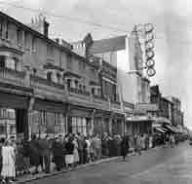
Rivoli
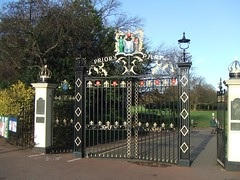
Park Gates Priory Park
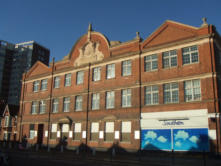
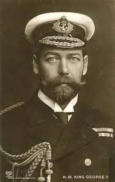
King George V
Co-op Sutton Road

St Paul’s Church
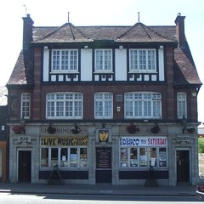

Spread Eagle
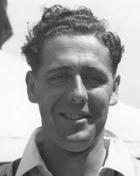
Trevor Bailey
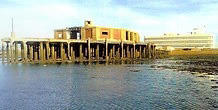
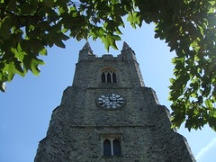
St Mary’s Church Tower
Corporation Loading Pier
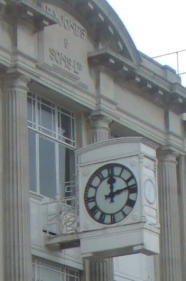
R. A. Jones Clock
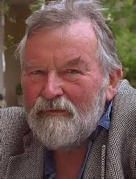
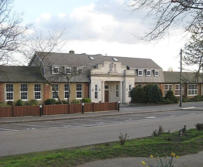
Robert Fowles
Westcliff High School for Boys
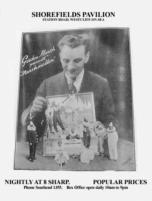
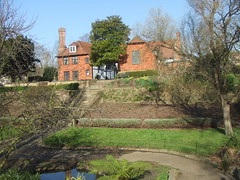
Southchurch Hall & Gardens
Shorefields Shows
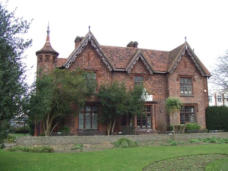
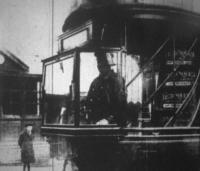
Tram with Windscreen
Leigh Library
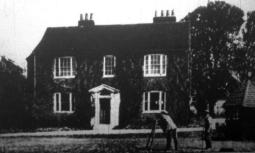
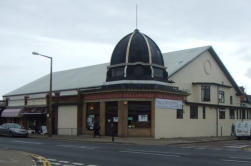

Plaza Southchurch
Hamlet Court
Corona as Riley’s Super Bowl



Website Info:

Southend-on-Sea’s No 1 History Website! Documenting The Town & The Townspeople
Now Incorporating The Sea Of Change Website


SOUTHEND CITY
Chalkwell ▪ Eastwood ▪ Leigh-on-Sea ▪ Prittlewell ▪ Shoeburyness ▪ Southchurch ▪ Thorpe Bay ▪ Westcliff-on-Sea
































































